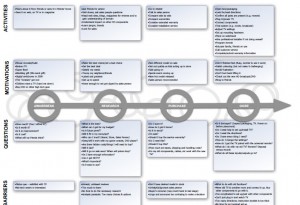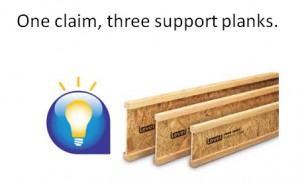Customer Journey…a Road Too Long?
Do you know your product’s top 5 twitch points? You should. Customer journey is a new age marketing tool used by comms planners to find better ways to intersect with and influence customers. The journey maps out awareness, activities, research, purchase and out-of-box experience. (Chart courtesy of Frog Design.) Some use the old school taxon AIDA (awareness, interest, desire and action), a dumbed down version. It’s truly good stuff and a lot more valuable than a simple DILO (day in the life of) media planning approach, but if you follow the Frog Design rigor (chart) you may also end up a little dizzy.
Twitch Points are moments when a person twitches way from one media or device in favor of another in search of clarification. Kindle to Google Earth. Newspaper to Wikipedia. Car dealership to JD Power. Best Buy to Amazon. Car radio to Shazam.
Twitch Point Planning is simpler than the above Frog Design learning scheme. Less complex. Understanding, mapping and manipulating customers closer to a sale is its goal. It needn’t be overthought. Don’t get me wrong, it needs to be thought, just not overthought. If you find your top 5 twitch points, your five most commerce producing twitches, you don’t need a road map, journey, or KPIs. You need a good accountant…to count da monies.
Peace be upon you.




